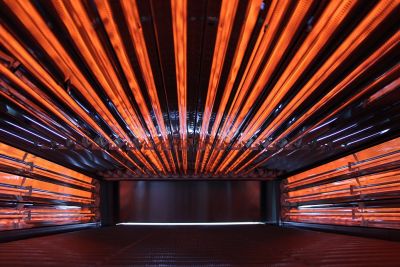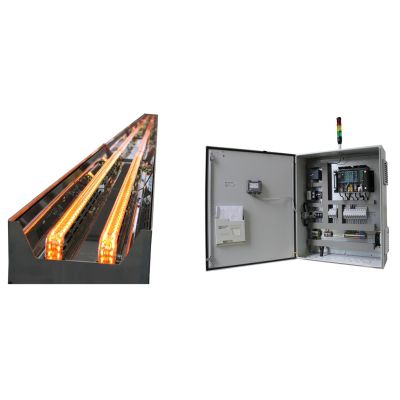Heating plastics: Forming and deep-drawing thermoplastics (thermoforming)
Whether interiors or car body components, beverage bottles or functional films in shoes - plastics accompany us in everyday life. In addition to injection moulding for the production of plastic products, forming processes are often used. Here, the thermoplastic is heated to glass transition temperature and then formed.
Infrared radiation as an optimal heat source for heating plastics
In industrial series production, energy efficiency and process stability play a decisive role alongside high throughput. In deep drawing and forming, preheating is an energy-intensive production step. Due to their high power density and direct energy input, infrared radiators guarantee a powerful and at the same time efficient heat source. In addition to temperature increases of 100 K/s, infrared emitters have a short reaction time of up to 1 second for switch-on and switch-off processes. In conjunction with non-contact temperature measurement by means of a pyrometer, infrared systems enable precise temperature control as well as a safe and monitored heating process.
Heating plastic films for forming: What should be considered when heating plastic?
For the forming of thermoplastics (thermoforming, plastic deep-drawing), the product must be heated to the respective glass transition temperature. Decisive factors in the heating of plastics are temperature homogeneity and sufficient heat penetration, whereby overheating of the semi-finished products should be excluded. Pyrometers are used for non-contact temperature measurement of the plastic sheets or plastic films. Process reliability is ensured by automation and control.
Materials: PE; PA; PP; PS; PET; ABS; PVC
Applications: e.g. packaging in the food industry, components for the automotive and electrical industries, window profiles and pipes in the construction industry.
The advantages of plastic thermoforming with infrared in an overview
- impressive power density and thus:
- Fast heating processes
- Increase in throughput
- Reduction of the required production space
- High process reliability via direct temperature control of the infrared emitters
- Contactless heating of the plastic
- Short reaction times, immediate operational readiness or process stop
- Switching on and off of individual emitters for different belt widths or component sizes
- Low heat losses → Efficient heating
- Uncomplicated operation of the automated process
- Linking of the heating process with upstream and downstream processes
Ingolf Jaeger
Head of Sales
Dipl.-Ing. Mechanical Engineering
E-Mail: i.jaeger@ibt.de
Phone.: +49 (0) 3731 1683-15


